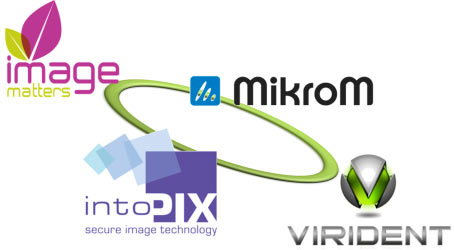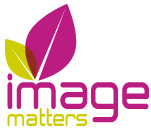 Many eyes and many tests later, the specifications for quality digital cinema playback was decided upon by the community. Then, in the spirit of ‘good enough’, Stereoscopic 3D quality problems were ignored. And more recently, it appears that High Frame Rate (HFR) and in particular HFR S3D is moving like an unexamined juggarnaut into the future.
Many eyes and many tests later, the specifications for quality digital cinema playback was decided upon by the community. Then, in the spirit of ‘good enough’, Stereoscopic 3D quality problems were ignored. And more recently, it appears that High Frame Rate (HFR) and in particular HFR S3D is moving like an unexamined juggarnaut into the future.
At the SMPTE event last month held in conjunction with NAB, Dr. Marty Banks tossed some landmines into the Knowledge Base. Then one of the people who did tests that made the 48 frame per second decision for the Hobbit gave their historical view. His bombshell was that 48 was chosen because it wasn’t known whether (enough…any?) hardware manufacturers could come to the plate with working equipment by the time of the release in late 2012.
One part of the DCI and SMPTE and ISO Specification for D-Cinema is a 250Mbps interface between the projector and the media player. In the early days this meant the link from the server, but since Series II TI systems capable of running 4K material (and all systems from Sony), this means an internal media block.
[Update: Qube announced at CinemaCon that their IMB supplies a 1Gig stream to the projector. A quick scan of the interwebz and the memory of other visits at CinemaCon puts the rest of the manufacturers at 500Mbps.]
24 frames per second times 2…OK, let’s double the Mbps into the projector…500Mbps is the bar that seems to be accepted wisdom for ‘good enough’ 48 frames per second stereoscopic 3D material, such as The Hobbit. Anyone got a problem with that? Answer: Who could? No one really has varied sources of material or even firm software to test it with.
Enter the new company image-matters. They have assembled equipment that will be able to show material at speeds above and below 1Gbps. They will show this at 6 cities around the world for the next 6 months. People will look and talk.
Here is the link for the press announcement:
High Frame Rate & High Bit Rate Test Equipment and Test Series
April 14, 2012, NAB Show, Las Vegas, for immediate release.
Image Matters, intoPIX, MikroM and Virident collaborate beyond the state of the art. The target is a series of tests on June 7 and 8 2012 in Burbank CA, coordinated by Michael Karagosian of MKPE Consulting, and cinematographers Kommer Kleijn SBC and David Stump ASC, as co-chairs of the SMPTE 21DC Study Group for Higher Frame Rates.
These tests will be conducted in collaboration with studios and the creative community. They will measure the minimum JPEG 2000 codestream bit rate requested by high frame rate content to reach the visually lossless quality demanded by digital cinema applications.
The experimental equipment set will enable playback of JPEG 2000 codestream bit rate higher than 1 Gbps (i.e. more than 4 times the current DCI specification). The decoded 2K images will be transmitted to a single projector at a frame rate of up to 120 fps (i.e. 60 fpe for Stereoscopic 3D content).
In order to speed up the test process and to allow the easy production of multiple encoding flavours, the equipment set will also be capable of encoding high frame rate content from uncompressed files in near real-time.
The assembled equipment will consist of one server incorporating 4 Virident FlashMAX boards and one intoPIX JPEG 2000 PRISTINE-P4 board. The PRISTINE will playback the decoded codestream on four 3G SDI links to the MikroM IMB inserted into the projector. The MikroM’s IMB will receive the four 3G-SDI links and pass the uncompressed image data directly to the projector backplane. Image Matters will insure project coordination and integration.
The integration has enough headroom to allow, on request, multiple equipments to be combined to achieve higher bit rates and/or higher frame rates.
Storage
- Four 1.4 TB Virident FlashMAX MLC cards:
- total capacity of 5.6TB
- total read bandwidth of 5.2 GB/s
- total write bandwidth of 2.2GB/s on XFS file system.
- Each Virident card has:
- a half height and half length form factor
- a PCIe x8 Gen1 bus • power consumption of 25 W
- a sustainable random read of 1,3 GB/s
JPEG 2000 Encoding/decoding
- One intoPIX PRISTINE P4 board
- 2K & 4K JPEG2000 decoder FPGA IP-cores
- high frame rates capacity: up to 120 Fps
- high bitrate capacity: up to 1 Gbps
- four 3G-SDI outputs
- one Genlock input
- One MikroM Integrated MediaBlock MVC 201
- four 3G-SDI input
- Formatting and pass through of uncompressed image data
- Up to 120 2K fps
Information
Please contact Jean-François Nivart
[email protected]
+32 495 23 00 08About Image Matters
Image Matters offers innovative hardware and software modules for professional image and sound handling. This new venture helps OEMs, integrators and end-users to develop advanced imaging systems and applications easily and quickly.
More information on www.image.matters.pro
About intoPIX
intoPIX is a leading supplier of image compression technology to audiovisual equipment manufacturers. We are passionate about offering people a higher quality image experience and have developed FPGA IP cores that enable leading edge JPEG 2000 image compression, security and hardware enforcement. Achieving a major breakthrough in digital cinema, intoPIX has achieved a leading position in the professional image compression industry based on the JPEG 2000 standard. More information on our company, customers and products can be found on www.intopix.com
Interested in HFR technology? Contact Gael Rouvroy, intoPIX C.T.O. – [email protected] – +32479774944
About MikroM
MikroM is a leading design house and provider of state-of-the-art audio/video technologies for selected professional markets. The portfolio covers silicon-proven IPs, ASICs, PCBs and Systems in combination with professional design services. With a variety of products and services MikroM focus on application-specific and reliable solutions for system integrators and OEMs in quality-driven markets as HD Broadcast, Digital Cinema and Advertisement/Presentation.
About Virident
Virident Systems’ professional Storage Class Memory (SCM) solutions deliver unconditional consistent performance that supports the most data-intensive content and applications. Virident Systems is backed by strategic investors, Intel®, Cisco® Systems and a leading storage hardware and software solutions provider as well as venture investors Globespan CapitalPartners, Sequoia Capital, and Artiman Ventures. For more information visit www.virident.com.
References:
High Frame Rates – The New Black, Getting to Speed

 IMF
IMF THUNDERBOLT
THUNDERBOLT CHANGE IN THE PROFESSIONAL FINISHING SPACE
CHANGE IN THE PROFESSIONAL FINISHING SPACE IIF ACES
IIF ACES ULTRAVIOLET
ULTRAVIOLET THE CLOUD
THE CLOUD
